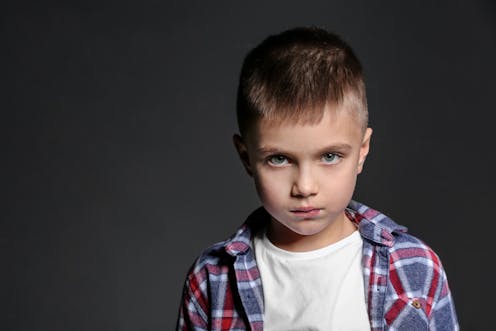Schools shouldn't wait for red flags to address student mental health needs
In order to prevent future mental health problems among at-risk students, schools must do a better job of screening for mental health problems earlier.

One out of every 4 or 5. That’s how many students will display a significant mental health problem over the course of their lifetime.
Such students can be identified early with considerable accuracy if educators are given the right training and tools. Unfortunately, most schools rely on reactive methods, like office discipline referrals, to figure out which students need behavioral and mental health services.
Research shows this approach of waiting until students act out in school is inefficient and leads to as many as 80 percent of those with mental health needs to fall through the cracks.
Such concerns have heightened in the wake of the Parkland high school massacre. News reports indicate the alleged shooter exhibited a number of troubling behaviors, raising questions about his mental health status and whether more could have been done to help him sooner.
To address the issue of students falling through the cracks, more schools should adopt proactive, universal screening tools.
Universal screening typically occurs three times throughout the school year: fall, winter and spring. Screeners are brief assessments that take no more than a few minutes to complete. They include approximately 20 questions and are given to each student in the elementary classroom. These tools ask students to indicate things such as “I lose my temper” or whether they are “adaptable to change.” The questions are purposefully broad and are meant to identify students who may be at risk for either internal problem behaviors, such as anxiety or depression, or external problem behaviors, such as aggression toward others. The screenings are scored and used to prioritize which students need intervention.
Screeners are typically administered without parental consent if they are embedded into the general school curriculum.
Research shows that screening tools can help educators identify students with mental health needs with far greater accuracy and speed, rather than waiting for a severe problem behavior, such as a school fight.
I developed one such tool – the Social, Academic and Emotional Behavior Risk Screener, or SAEBRS – with the help of several grants, including $1.4 million from the Institute for Educational Sciences in the U.S. Department of Education.
If society is serious about preventing severe mental and behavioral health problems, it must take a critical look at the current state of mental health supports in the nation’s schools. Doing so will bring the value of screening tools into sharper focus.
School mental health stretched thin
First, let’s consider the service provider side of the equation. The National Association of School Psychologists recommends a ratio of 1 school psychologist for every 500-700 students. However, the reality is that states on average have ratios of nearly twice that amount. Simply put, schools rarely have the staff necessary for comprehensive mental health services.
Second, only a small number of students who need mental health services will receive intervention in a timely manner. Due to the amount of time that teachers spend with students, teachers are the critical link to identify which students need help and to refer students to school psychologists, counselors and social workers. The question is: Do teachers know what to look for?
Silent issues overlooked
Consider a typical elementary classroom with 30 students. Approximately 6 students, on average, will have a critical mental and behavioral health problem such as anxiety or aggression, yet less than half will receive timely intervention. Who are those students? Typically those that exhibit more outward types of problems, such as aggression, problems paying attention and disruptive behavior.
Students with harder-to-see issues, such as withdrawal, anxiety and social isolation often get overlooked and rarely receive essential services. Teachers often lack the training or tools necessary to know which students may need help, beyond those that are disruptive to instruction.
These screenings are not part of the process for comprehensive special education evaluations, so the concerns about schools having to offer special education services as a result of the screening do not come into play.
While screening tools can help identify troubled students sooner, it is important not to oversell the usefulness of these tools. To be clear, there are no research-validated tools that can reliably identify which students may commit violent acts.
Toward universal screening
Currently, less than 15 percent of schools engage in some form of behavioral or mental health screening. However, more schools are adopting universal screening.
As the developer of a screening tool, I have seen rapid adoption of the tool over the last four years from two elementary schools in rural North Carolina to hundreds of schools across 28 states. As schools consider how best to meet the behavioral and mental health needs of their students, screening can provide crucial information to guide the way.
Nathaniel von der Embse receives funding from the Scattergood Foundation, Institute for Education Sciences, and the National Institute for Justice.
Read These Next
How to reduce gift-giving stress with your kids – a child psychologist’s tips for making magic and a
Depending on family circumstances and a child’s personality type, gift giving runs the gamut of fun…
The world risks forgetting one of humanity’s greatest triumphs as polio nears global eradication − 7
Polio may finally be defeated in the next 5 years. Will the world recognize what an extraordinary achievement…
People are getting their news from AI – and it’s altering their views
Even when information is factually accurate, how it’s presented can introduce subtle biases. As large…






